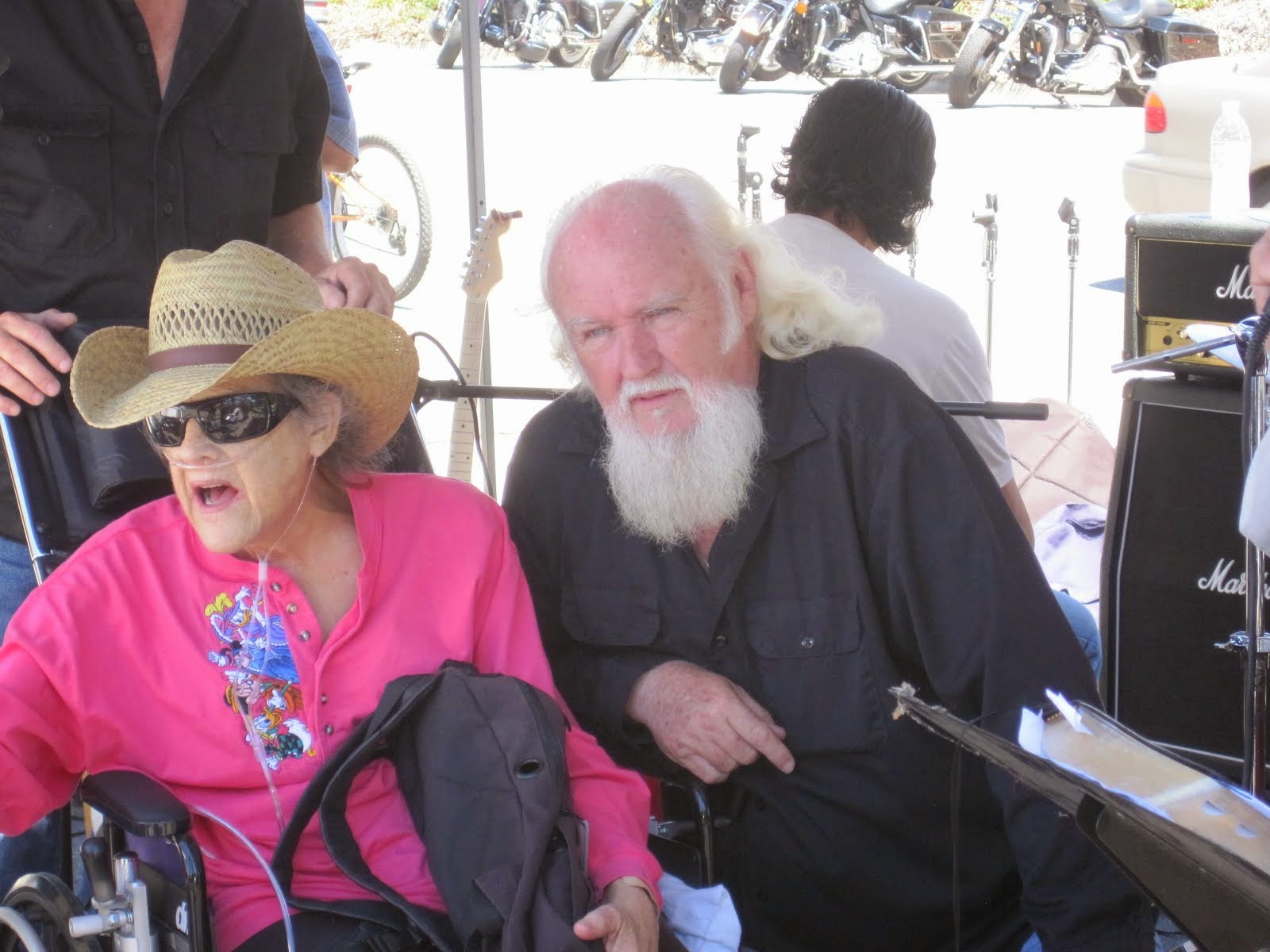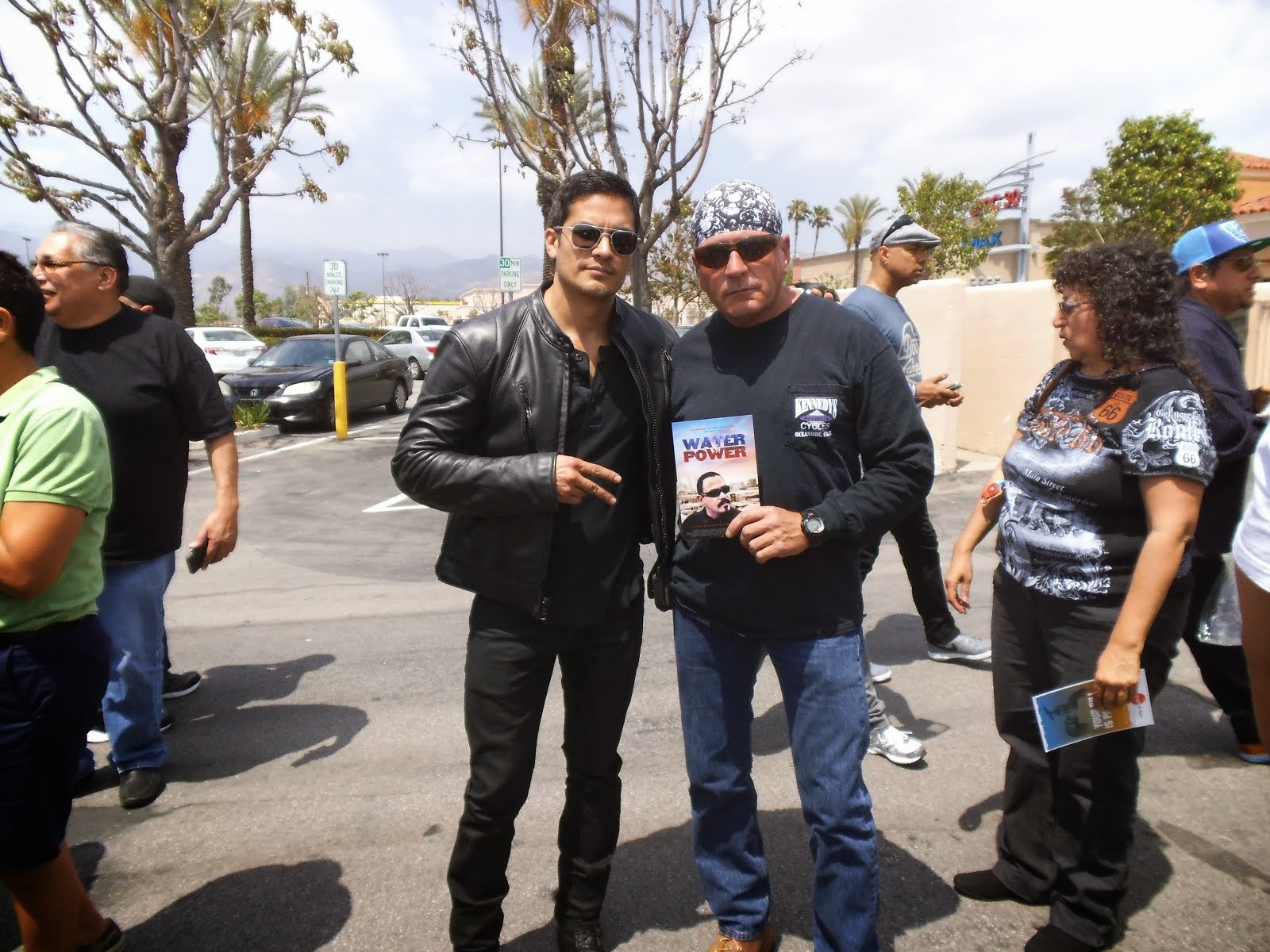OFF THE WIRE
COMMENT BY ROBERT
Where are we on this issue now? I know that before you are added, you
get a letter and are allowed a chance to appeal in writing within two
weeks of getting the letter - even that doesn't mean you will be
successful. But for motorcycle club members with no record who are
added just because law enforcement lists their club as a gang and took a
picture them with their cut on, I suspect additional challenges getting
their club and their name removed.
By Ali Tadayon
Almost 9,000 people in Riverside County are listed as gang
members in a database used by law enforcement – and it’s likely that not
all of them are aware.
That’s because under current state law, information in the
CalGang database is visible only to law enforcement officers, who use it
as an investigative tool and intelligence index. Someone does not have
to be convicted of a crime, or even contacted by police, to be entered
into the system.
That leads critics to see the database as a secretive
surveillance system that “obviously has to be reformed” – even as its
supporters say it helps police monitor and stop gang activity and
“obviously it’s a benefit.”
In an effort to make CalGang more transparent and accurate, Assemblywoman Shirley Weber, D-San Diego, introduced a bill in March that would require law enforcement agencies to notify people who are added to the list. Currently, adults are not notified, but a 2014 law required that parents of juveniles be told when they’re entered.
Weber’s bill, AB 2298, also includes provisions related to privacy and accuracy, and would make it easier for names to be removed. The bill passed both the state Senate and the Assembly, with support from only Democratic legislators, and is awaiting Gov. Jerry Brown’s signature.
After the bill was introduced, the California state auditor published a report on the CalGang database, concluding it has “inadequate oversight” and that its data is not collected and maintained “in a manner that preserves individuals’ privacy rights.”
Weber said having one’s name on the list could lead to more serious consequences, such as adding years to sentences of people convicted of non-gang-related crimes. Though CalGang information is not supposed to be used for any purposes unrelated to law enforcement, the auditor’s report found that it was used in some employment screenings and military-related screenings.
Sgt. Adam LeVesque, who works in the Riverside Police Department’s Gang Intelligence Unit, said the purpose of the database is not to collect vast amounts of information on people, but to lead police to crime suspects.
“I think if the public were able to see how we use this information, they would feel more comfortable with us collecting it, and more secure knowing this type of information leads to us taking violent criminals off the street on a routine basis,” LeVesque said.
Weber said in a phone interview that the database, developed in 1997, “needs to be used for the purpose it was designed for.”
“I’m saying that the database obviously has to be reformed, and there has to be some verification of what is used,” she said.
GETTING ON, OFF THE LIST
A person could be listed in the CalGang database as either a gang member or an affiliate – someone “known to associate with active gang members and whom a law enforcement officer reasonably suspects may be involved in criminal activity or enterprise,” according to the state auditor’s report.
The criteria for a name to be added are described in the report as “broad.” If the person doesn’t say during a custody interview that they are in a gang, two other criteria must be met. Those include having gang tattoos, frequenting gang areas, wearing gang dress and being identified as a gang member by an informant – who could be either credible or “untested.”
Current, CalGang policy calls for people’s names to be taken off the list within five years unless their information is updated. But the auditor’s report found several instances in which agencies did not purge names in that time frame, due in part to “inadequate oversight.”
If Weber’s bill becomes law, people will be removed from the database if they have not been convicted of a gang-related crime within three years of being added, and an appeal process will be established.
The bill calls for CalGang and similar databases to comply with federal requirements regarding privacy and accuracy of information, and for law enforcement agencies to submit annual reports on the databases. Those reports will be made public.
WHO’S ON THE LIST
Each California county maintains its own “regional node” of the database and is required to compile demographic reports of gang members in its node.
Through a California Public Records Act request, The Press-Enterprise acquired Riverside County’s demographic report in April, which showed that 8,955 people here were considered gang members.
Data provided by the Riverside County District Attorney’s Office showed that more names are being removed from the list than added:
• Between Jan. 1, 2011, and April 5, 2016, 7,739 names were added to the list and 12,487 were removed.
• From Dec. 31, 2015, to April 5, 2016, 307 names were added and 552 were removed.
The Press-Enterprise was denied a request for the last 100 names added to the list and their corresponding ZIP codes.
HOW CALGANG IS USED
California law enforcement officers who are trained to use the database can pull it up on a computer in their patrol cars.
According to a report compiled for the Assembly Committee on Appropriations, “the goal is to improve the effectiveness of the regional law enforcement and criminal justice agencies through the efficient handling and exchange of criminal justice intelligence and investigative information on gangs and gang activity.”
LeVesque, of the Riverside Police Department, said the database is an essential tool in gang-enforcement operations, helping police identify targets in their investigations, vehicles suspects drive or who they associate with.
“It provides the kind of leads that we could follow up on – sometimes within minutes,” he said.
A “classic example” he gave of how the database is used would be if police receive a description of a person at large who was involved in a gang-related crime. Police can search for the database for people with similar descriptions. If the suspect had identifiable tattoos or shouted the name of their gang, police can search those things too.
“By being able to search for members of a gang and look for suspects that match a description, obviously it’s a benefit,” LeVesque said.
On the other hand, Dave Maass, spokesman for Bay Area digital civil liberties nonprofit group Electronic Frontier Foundation, sees the database as a means for police to spy on innocent people.
“CalGang is so strange in that you can get added to it and associated to it and find yourself being pulled over more often, having a harder time with your interactions with police because somebody at some point decided you need to be earmarked,” Maass said.
NOTIFICATION
Lobbyist John Lovell, who represents the Riverside Sheriffs’ Association, which opposed Weber’s bill, said the database is well-used by Riverside County sheriff’s deputies.
“It’s a very reliable investigatory tool,” Lovell said. “I would analogize it to a lighthouse; you don’t know how many ships it keeps from hitting the rocks but that’s not a reason to tear the lighthouse down.”
Lovell said notifying people whose names are added to the database could be problematic. Law enforcement may be forced to share “sensitive information” with gang members who appeal, he said; that could endanger informants or expose information about a larger investigation.
While Weber’s bill would require notifying people added to the list, it allows exceptions if doing so would compromise an active investigation.
RESTRUCTURING
The State Auditor’s Office recommended that the California Department of Justice oversee CalGang, providing “an oversight structure that ensures that information is reliable and that users adhere to requirements that protect individuals’ rights.”
Weber, whose suspicions of the database “intensified” after reading the auditor’s report, said she hopes the bill will lead to more accountability. If not, she said, it may be time for CalGang to go.
“If we can’t get the transparency we need, it should be abolished,” Weber said.
LeVesque, however, believes getting rid of CalGang would slow down gang-enforcement operations.
“Without it we are left to knocking on people’s doors, and contacting people who may be too afraid to talk,” LeVesque said.
Contact the writer: 951-368-9284, atadayon@scng.com, @PE_alitadayon
skip to main |
skip to sidebar




Bill & Annie

Art Hall & Rusty


NUFF SAID.......


































































OOHRAH

ONCE A MARINE,ALWAYS A MARINE

GIVING BACK


MOUNT SOLEDAD














BIKINI BIKE WASH AT SWEETWATER










FRIENDS





BILL,WILLIE G, PHILIP










GOOD FRIENDS


hanging out

brothers


GOOD FRIENDS

Good Friends

Hanging Out




Bill & Annie
Art Hall & Rusty
Art Hall & Rusty


NUFF SAID.......



















NUFF SAID......



























Mount Soledad




BALBOA NAVAL HOSPITAL
RUSTY DANNY

ANNIE KO PHILIP

PHILIP & ANNIE

OUT & ABOUT

OOHRAH...

OOHRAH
ONCE A MARINE,ALWAYS A MARINE

ONCE A MARINE,ALWAYS A MARINE
American Soldier Network GIVING BACK

GIVING BACK
CATHY & BILL
PHILIP & DANNY & BILL

MOUNT SOLEDAD
bills today
EMILIO & PHILIP
WATER & POWER
WATER & POWER
bootride2013



BIKINI BIKE WASH AT SWEETWATER







ILLUSION OPEN HOUSE

FRIENDS


GOOD FRIENDS



BILL,WILLIE G, PHILIP









GOOD FRIENDS

GOOD FRIENDS
Friends
- http://www.ehlinelaw.com/losangeles-motorcycleaccidentattorneys/
- Scotty westcoast-tbars.com
- Ashby C. Sorensen
- americansoldiernetwork.org
- blogtalkradio.com/hermis-live
- davidlabrava.com
- emiliorivera.com/
- http://kandymankustompaint.com
- http://pipelinept.com/
- http://womenmotorcyclist.com
- http://www.ehlinelaw.com
- https://ammo.com/
- SAN DIEGO CUSTOMS
- www.biggshd.com
- www.bighousecrew.net
- www.bikersinformationguide.com
- www.boltofca.org
- www.boltusa.org
- www.espinozasleather.com
- www.illusionmotorcycles.com
- www.kennedyscollateral.com
- www.kennedyscustomcycles.com
- www.listerinsurance.com
- www.sweetwaterharley.com

Hanging out

hanging out
Good Friends

brothers
GOOD FRIENDS

EMILIO & SCREWDRIVER

GOOD FRIENDS
Danny Trejo & Screwdriver

Good Friends
Navigation
Welcome to Bikers of America, Know Your Rights!
“THE BIKERS OF AMERICA, THE PHIL and BILL SHOW”,
A HARDCORE BIKER RIGHTS SHOW THAT HITS LIKE A BORED AND STROKED BIG TWIN!
ON LIVE TUESDAY'S & THURDAY'S AT 6 PM P.S.T.
9 PM E.S.T.
CATCH LIVE AND ARCHIVED SHOWS
FREE OF CHARGE AT...
BlogTalkRadio.com/BikersOfAmerica.
Two ways to listen on Tuesday & Thursday
1. Call in number - (347) 826-7753 ...
Listen live right from your phone!
2. Stream us live on your computer: http://www.blogtalkradio.com/bikersofamerica.
A HARDCORE BIKER RIGHTS SHOW THAT HITS LIKE A BORED AND STROKED BIG TWIN!
ON LIVE TUESDAY'S & THURDAY'S AT 6 PM P.S.T.
9 PM E.S.T.
CATCH LIVE AND ARCHIVED SHOWS
FREE OF CHARGE AT...
BlogTalkRadio.com/BikersOfAmerica.
Two ways to listen on Tuesday & Thursday
1. Call in number - (347) 826-7753 ...
Listen live right from your phone!
2. Stream us live on your computer: http://www.blogtalkradio.com/bikersofamerica.
Good Times
Hanging Out

Key Words
- about (3)
- contact (1)
- TENNESSEE AND THUNDER ON THE MOUNTAIN (1)
- thinking (1)
- upcoming shows (2)
Blog Archive
-
▼
2019
(367)
-
▼
November
(112)
- BABE OF THE DAY
- This Man Took Over 1,000 Children Of Fallen Soldie...
- BABE OF THE DAY
- BABE OF THE DAY
- BABE OF THE DAY
- BABE OF THE WEEK - CHICA
- 2nd Annual Temecula Toy Run
- Orange County,Ca Deputies fired in evidence audit
- BABE OF THE DAY
- The Worlds First Marijuana Mall Opened in Colorado
- BABE OF THE DAY
- Legalizing Marijuana Nationwide Would Create One M...
- GOP lawmaker wants members of Congress to be drug ...
- BABE OF THE DAY
- Czech government tells its citizens how to fight t...
- POLICE DEVIANCE & ETHICS
- BABE OF THE DAY
- Dear Americans: This Law Makes It Possible To Arre...
- WHAT IS R.I.C.O.?
- 10 Painfully True Examples of Murphy’s Laws for Mo...
- Free the Nipple' movement: Women can now legally g...
- Statistics Prove Outlaw Motorcycle Clubs Not A Pub...
- 2019 National Gang Threat Assessment – Emerging Tr...
- WISDOM...........
- USA - Does cellphone-sweeping ‘StingRay’ technolog...
- Landmark State Court Ruling Says THC in Blood is N...
- BABE OF THE DAY - How'd you like to come home to ...
- California - Forfeiture Games
- California Public Records Act.
- Meet the machines that steal your phone’s data
- January’s new military shopping benefit delayed fo...
- USA - The Myth of the Rule of Law by John Hasnas
- The Loophole That Lets Cops Stop, Question and Sea...
- BABE OF THE DAY
- Floridians could carry guns in public without lice...
- HEALTH BENEFITS OF RIDING!
- 7 Simple Steps from a Cop on How to Fight Every Sp...
- AP Exclusive: Google tracks your movements, like i...
- BABE OF THE DAY
- CA - CLETS - Reports tally internal misuse of powe...
- USA - Stop and identify statutes
- USA - Supreme Court: Police need warrant to search...
- BABE OF THE DAY
- Boss Pays Off His Employee’s Mortgage So the Vietn...
- Meet the first female Marine assigned to fly the F...
- Bill giving servicemen and women largest pay raise...
- BABE OF THE DAY
- Bikers of America, The Phil and Bill Show, Return`s
- 16th Annual Iron-Workers Local-433 M/C Toy Run, 11...
- Loophole in law granting illegal immigrants driver...
- SAE J2825 Standard
- Could you be in California’s gang database? Bill w...
- his genius tool can save you money on Home Depot a...
- Preventing Police Abuse
- Why You Need A Video Camera On Your Motorcycle Or ...
- Gangs, Gangs, Gangs, Gangs
- BABE OF THE DAY
- US policing - Police violence, cliques, and secret...
- The Snitch’s Tale
- More info on the new Shared Gang Databases (AB 229...
- BABE OF THE DAY
- Enlightening police article on identifying and doc...
- .‘Sneak & peek’ warrants allow police to secretly ...
- If An Agent Knocks....Table of Contents
- Preventing Police Abuse Filing a Police Complaint ...
- Why Grandpa carries a gun
- Lane splitting by Motorcyclists is Legal in Califo...
- BABE OF THE DAY
- Bill giving servicemen and women largest pay raise...
- TOTALLY_KIDS 11/10/2019
- New police radars can 'see' inside homes
- A Little Education on the MC World
- What Are California’s Laws on Knives?
- CALIFORNIA - Here are the baseline knife laws in C...
- BABE OF THE DAY
- Trial by Written Declaration - California
- HESSIANS December 7 2919
- POLICE DEVIANCE & ETHICS
- Update on California Motorcycle Club Gang Validati...
- The Imaginary War Between MC’s And the Government
- Consolidated list of business establishments that ...
- BABE OF THE DAY
- BABE OF THE DAY
- Government Issues Orders to go after leadership of...
- USA - Rules for Resisting the Police State
- Can we record the police?
- Don’t Call Police. Ever.
- Terry stop...- In the United States, a Terry stop ...
- Preventing Police Abuse
- “THE BIKERS OF AMERICA, THE PHIL and BILL SHOW” 10...
- Breathalyzers not fully reliable: NYT
- In first, U.S. judge throws out cell phone 'stingr...
- The Getback Whip Issue Revisited.
- Adios Mexico
- Finally! You Can Qualify for a Concealed Carry Onl...
- CHECK OUT IF YOU MEET THE HELLS ANGELS MEMBERSHIP ...
- United States of America BILL OF RIGHTS
- Identifying and Documenting Gang Members
- The California Biker Black List
- California Criminal Record Expungement, Sealing, P...
-
▼
November
(112)
Bikers of America, Know Your Rights!... Brought to you by Phil and Bill
Philip, a.k.a Screwdriver, is a proud member of Bikers of Lesser Tolerance, and the Left Coast Rep
of B.A.D (Bikers Against Discrimination) along with Bill is a biker rights activist and also a B.A.D Rep, as well, owner of Kennedy's Custom Cycles
